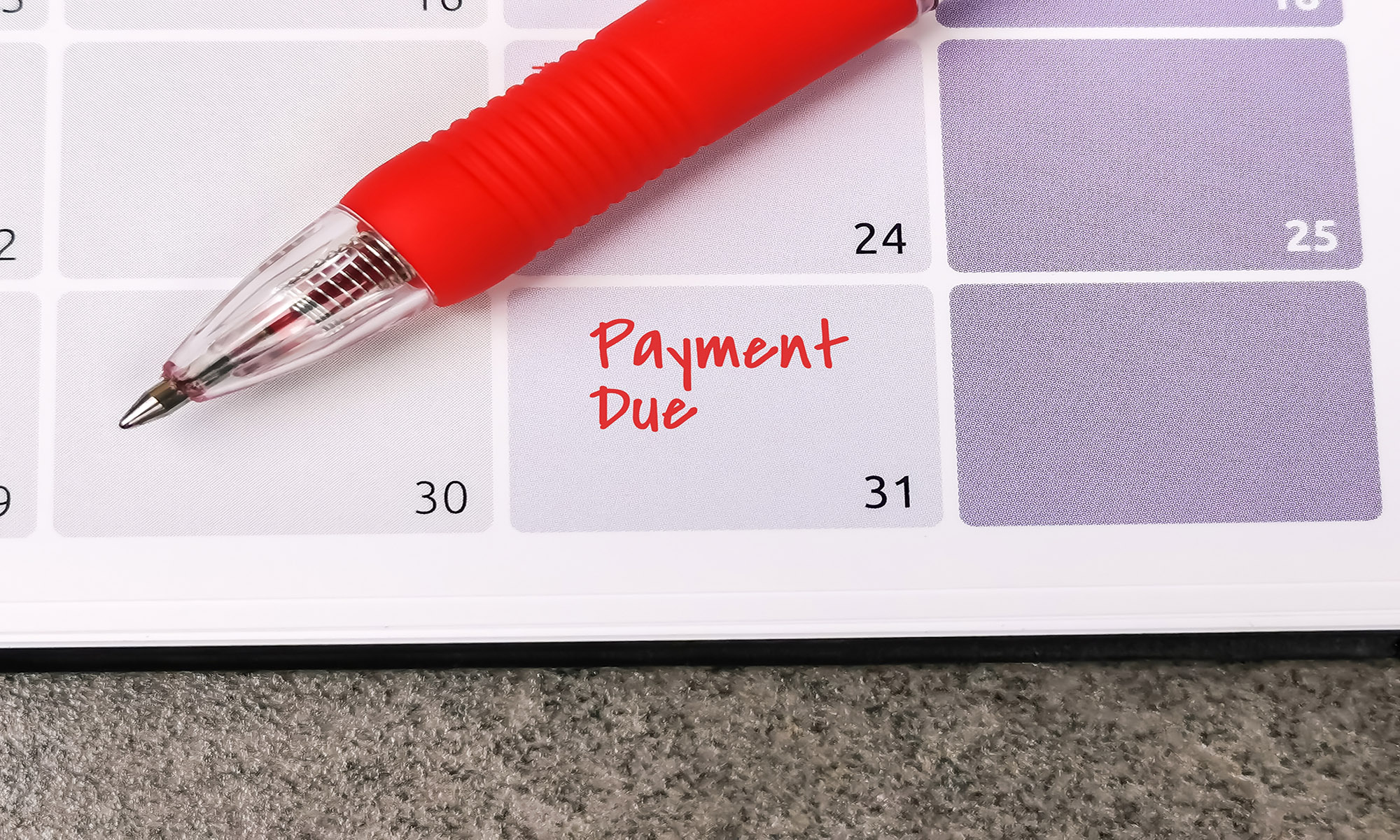February 3, 2022
Oklahoma Case Illustrates Importance
of Contract Reviews
Bryan Mason, editorial associate
The Supreme Court of Oklahoma recently determined a subcontractor’s decision to waive its rights and claims does not automatically bar sub-subcontractors from filing a lien for unpaid invoices. In H2K Technologies, Inc. v. WSP USA, Inc., the Supreme Court reversed and remanded the trial court’s decision for further proceedings.
“H2K was well within its rights to enforce a mechanic’s lien,” said Chris Ring, of NACM STS. “Basically, the Oklahoma Supreme Court did not rule in favor of H2K, rather they remanded the case back to the lower court and H2K will have to keep fighting in the lower court. But the good news is, they can fight.”
The court only considered what effect, if any, a lien waiver clause in the original contractor has upon materialmen that were not parties to that contract and whether Oklahoma law prohibits such clauses from being placed in a construction contract.
This case reinforces the importance for material suppliers to review contracts closely on a project—especially if their contract incorporates another—prior to furnishing materials, said Connie Baker, CBA, director of operations for NACM STS.
“This comes down to ‘incorporated by reference’ or ‘flow-down’ clause interpretation,” Ring said. “Techsas failed to incorporate or flow down into the H2K contract the lien waiver clause in the general contract.”
Facts of the Case
The general contractor (GC), WSP USA, Inc., hired Techsas Inc. as a subcontractor on an oil refinery, Wynnewood Refining Co., LLC. Under its contract with the GC, Techsas waived its rights and claims on the project once materials were furnished and labor was completed. This contract also required Techsas to insert a similar waiver clause into its subcontracts. Techsas, however, failed to do so when it hired H2K Technologies to provide additional labor and materials. After paying two of three invoices, Techsas filed for bankruptcy protection. H2K sent the outstanding invoice to both Techsas and WSP. When Techsas failed to pay, H2K served a preliminary lien notice on Wynnewood, Techsas and WSP; two months later it filed a lien statement. WSP, as principal, and Fidelity and Deposit Company of Maryland, as surety, submitted a bond and held money in trust to cover the lien amount. WSP and Fidelity were named defendants and H2K dismissed Wynnewood. A trial court via judgement summary ruled in favor of the defendants as it determined although the Techsas contract was governed by New York law, which prohibits waiver clauses, contract provisions that subject a construction contract to the laws of another state are against public policy in Oklahoma. It also determined that because Techsas had waived its rights to all liens and claims, H2K could not "obtain any greater rights" than the subcontractor, Techsas, and therefore did not have a legal right to impress a lien on the property.
The Supreme Court, however, decided that the waiver of lien clause in the subcontractor's contract with the original contractor does not automatically flow down to the materialman, thereby waiving such materialman's statutory entitlement to file a mechanics' and materialman's lien.
“If a subcontractor agrees to give up its lien rights, it will only be able to recoup payment from who hired them,” Baker said. “In a bankruptcy case like this, going against the property is the only way they will ever be paid. This case shows how important it is to read the contract and mark out what could hurt your company.”
Strategies to Elevate Your Cash Collections Game
Annacaroline Caruso, editorial associate
Cash collection can sometimes be difficult, but it does not have to be. Think of cash collection and business cash flow in a new way, suggests Suleman Qureshi, region head of credit to cash at Nokia Networks (Budapest, Hungary).
“One of the earliest lessons I learned in business is that balance sheets and income statements are fiction,” Qureshi said, during an FCIB webinar, Cash Collection Strategies to Improve Business Cash Flow (B2B). “Only cash flow is the reality.”
Qureshi compared cash flow to gasoline in a vehicle. It is easy to ignore that you are low on gas (cash) if you are focused on other things. However, it also should be a priority just like cash flow. “Cash is the blood and life of the organization,” he said.
So, what is one of the best ways to improve business cash flow? Cash collections, Qureshi said. Success is all about planning. The more proactive you are as a collector, the better. “The reactive cash collection is like firefighting,” he explained. “You need to plan and then move on.”
Half of the work that leads to successful cash collecting from your customer is done at the beginning of the order-to-cash cycle. “The moment you reach a dispute, you will need to reverse engineer and reach the root cause of the dispute,” Qureshi said. “That’s why it is important to have a deep understanding from the initial order through delivery completion.”
The contract is one of the most important documents to ensure you get paid. If an invoice does not cover the deliverables agreed to in the contract, “then you are definitely going to end up in a dispute and you are less likely to get paid by the due date,” he said.
The older the debt, the more unlikely it is that you will collect. Qureshi breaks debt aging into four stages to handle disputes quickly and efficiently. The preventative stage occurs before the invoice due date. During this time, keep communication open with your customer, Qureshi said.
“As a collection professional, you need to try and foresee the behavior of your customers,” he explained. “With payments, anticipating new trends can be especially challenging. Customer behavior and expectations are evolving at a very rapid pace.”
Track payment runs, disputes, nonflexible payment methods, system challenges and financial crises your customer may be facing to try and stay ahead of their payment trends, Qureshi said. “You need to align your collections efforts with customer behavior,” he said.
Once your customer has missed the due date, the debt is in the early delinquency stage. Reach out to your customer and set up a phone call or meeting, and make sure to keep records of conversations and interactions you have with the customer, Qureshi cautions.
If your customer still has not paid at 60-days past due, you have reached the advanced delinquency stage. Debts that reach more than 120-days late are in the legal stage. When debts reach these points, they are more challenging to collect and you may want to consider hiring a third-party collector, he said.
Other ways to help shorten the cash-collection cycle include:
- Invoice promptly
- Contact customer before due date
- Remit dunning letters
- Obtain payment of undisputed amounts
- Issue attorney letters
- Involve others on your team
To watch Cash Collection Strategies to Improve Business Cash Flow in its entirety, register for the on-demand version.
Kamakura Index Shows 1.30% Decline
in Credit Quality
Martin Zorn, president & COO, Kamakura Corporation
We started the new year with an increase in the number of known risks. The Federal Reserve’s message on unwinding quantitative easing has been muddled at best, contributing to the uncertainty. We already know the Fed erred in its early estimation that inflation was “transitory.” And since Jerome Powell has been chair, the market has come to expect the “Powell Put,” hoping that if asset prices fall precipitously, the Fed will come to the rescue. But we also know that hope is not a strategy.
Capitalism encourages investment with the expectation of profit. It also produces failures. The key to capitalism’s success is market participants’ willingness to forgo immediate gratification to obtain greater future reward. At its most simplistic, it is the story of the fisherman who foregoes several days of fishing with a line and hook in order to build a net.
Today’s politicians—and the policymakers who follow their lead—promise immediate results while deferring the costs of paying for them. Covid-related programs are an example. Obviously, the pandemic required a policy response, but the monetary and fiscal policies the government adopted, while they prevented catastrophic outcomes, were extremely broad and expansive. We do not yet know all of their deferred effects, but inflation is one that is already raising its ugly head. Will an acceleration in future defaults be a second byproduct?
Our expected cumulative default table shows an acceleration in expected defaults between years three and five. Hence there is no free lunch. One could almost wonder whether politicians who said “Go big!” were referring to the size of the stimulus or the size of the next credit downturn.
The Kamakura Troubled Company Index® indicates that credit quality remained low by historical measures but increased in January to 5.70%, compared to 4.40% last month. (An increase in the index reflects declining credit quality, while a decrease reflects improving credit quality.) Volatility increased for the second consecutive month, with default probabilities ranging from 3.98% on January 12 to 7.19% on January 26. Over the past year, the index has declined by 13.97%. The low was set on August 12, at 2.06%.
At the close of January, the percentage of companies with a default probability between 1% and 5% was 4.94%, an increase of 1.04% from the previous month, and those with a default probability of more than 20% amounted to 0.03%, an increase of 0.02% over the prior month.
Among the 20 riskiest-rated firms listed in January, eight were in China, with seven in the U.S., two in Mexico, and one each in Great Britain, Ireland and Norway.
As we have said before, the role of risk management is to anticipate what may happen and be prepared to respond quickly to a dynamic environment. The current environment provides an opportunity for well-informed risk managers to be the stars of their organizations.
US Economic Growth Expected to Remain Strong in 2022, Despite Risks
Annacaroline Caruso, editorial associate
The U.S. economy ended 2021 with a growth rate of 6.9% in the fourth quarter—making last year the fastest rebound since 1984. Despite several risk factors, the economy this year should grow at a more sustainable pace of 3.7%, without the massive peaks and valleys seen in 2021, said Mohammed Chaudhri, U.K. chief economist with Experian.
“This year we will start to see a more resilient U.S. economy, even with any adverse scenarios,” he said during an Experian webinar, Macroeconomic forecasting and regional trends - January 2022. “But as always, there could be risks that hit us off this trajectory.”
One factor that could dent economic growth is the labor market. The U.S. is still down roughly 3.6 million jobs from pre-pandemic levels, said Joseph Mayans, economist with Advantage Economists LLC, during the webinar. “Businesses are not only having a hard time finding people, but they are having a hard time retaining people,” Mayans said. “You have a record-high number of people quitting their jobs, and this issue will take a while to resolve.”
While some businesses still struggle to find workers, Chaudhri expects unemployment levels to improve to 3.6% in 2022. “Even in an adverse scenario, we won’t see unemployment go back to what it was during the height of the pandemic,” he said. “We have seen some structural shifts away from some of the risks where unemployment spiked.”
Inflation and the Federal Reserve’s response also will impact economic growth in 2022, for better or worse. Current inflation is sitting around 7%, still well above the Fed’s target rate. Inflationary pressures are driven largely by global supply shortages and high demand, which the Fed does not traditionally handle, Chaudhri said.
“We could all say the Federal Reserve is going to be acting disproportionately, trying to bring down inflation when most of the inflation is being caused by issues that it has no control over, like supply shortages, but we are seeing commodity prices rise to levels we haven’t seen before,” he explained.
Experian expects the Federal Reserve to raise interest rates three to four times this year in attempts to curb inflation. The first hike could come as soon as March, Federal Reserve Chairman Jerome Powell said on Wednesday.
“The Fed in general still believe most of inflationary factors are COVID-related and will ease over time,” Mayans said. “But one thing to keep in mind is the Fed has undershot their inflation projection consistently. Inflation has continued to surprise in its persistence.”
-
APRIL
22
3pm ET -
Do You Know Who You Are Selling to?
Speaker: Emory Potter, Esq., Hays & Potter, LLP
Duration: 60 minutes
-
Where the Buck Stops: Establishing KYC &
Export Compliance Best Practices
Speaker: Paul J. DiVecchio, principal of DiVecchio & Associates
Duration: 60 minutes -
APRIL
24
11am ET
-
APRIL
29
3pm ET -
Just a Little off the Top: Strategies for Reducing the Growing Cost of B2B Credit Card Acceptance
Speakers: Lowenstein Sandler Partner Andrew Behlmann and
Colleen Restel, Esq.
Duration: 60 minute
-
Collections 101
Speaker: JoAnn Malz, CCE, ICCE, Director of Credit, Collections, and
Billing with The Imagine Group
Duration: 60 minutes -
MAY
7
11am ET







